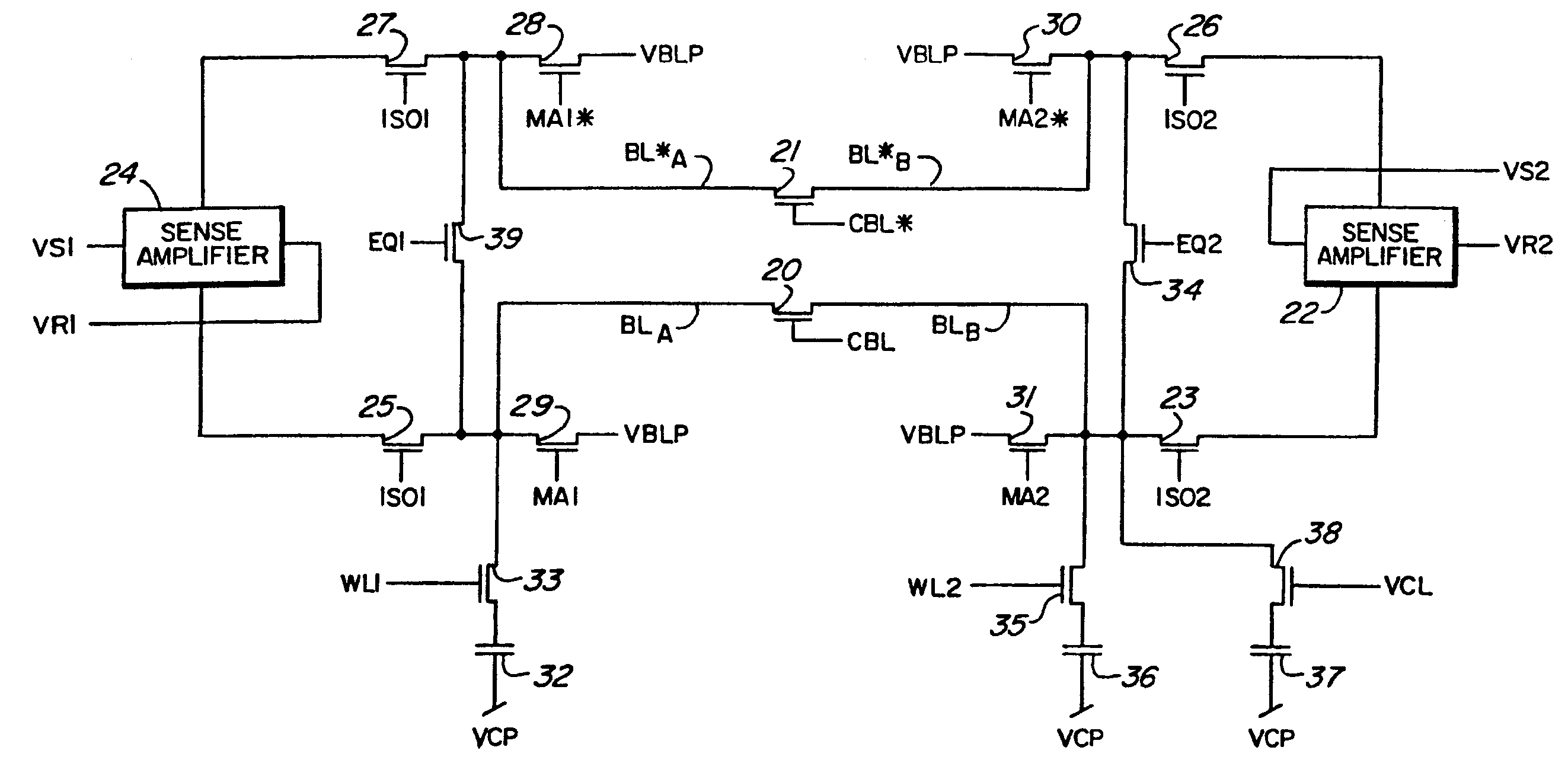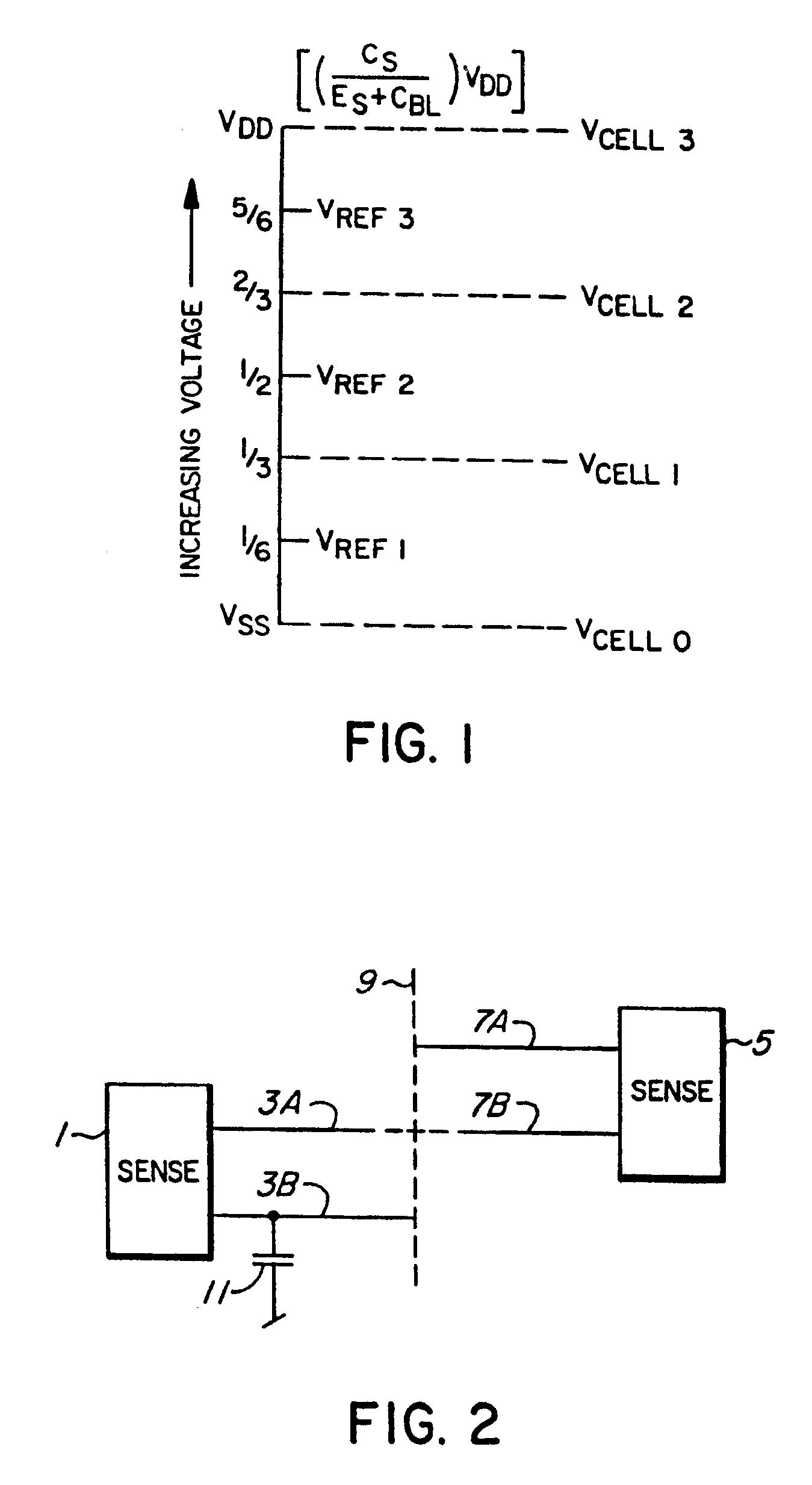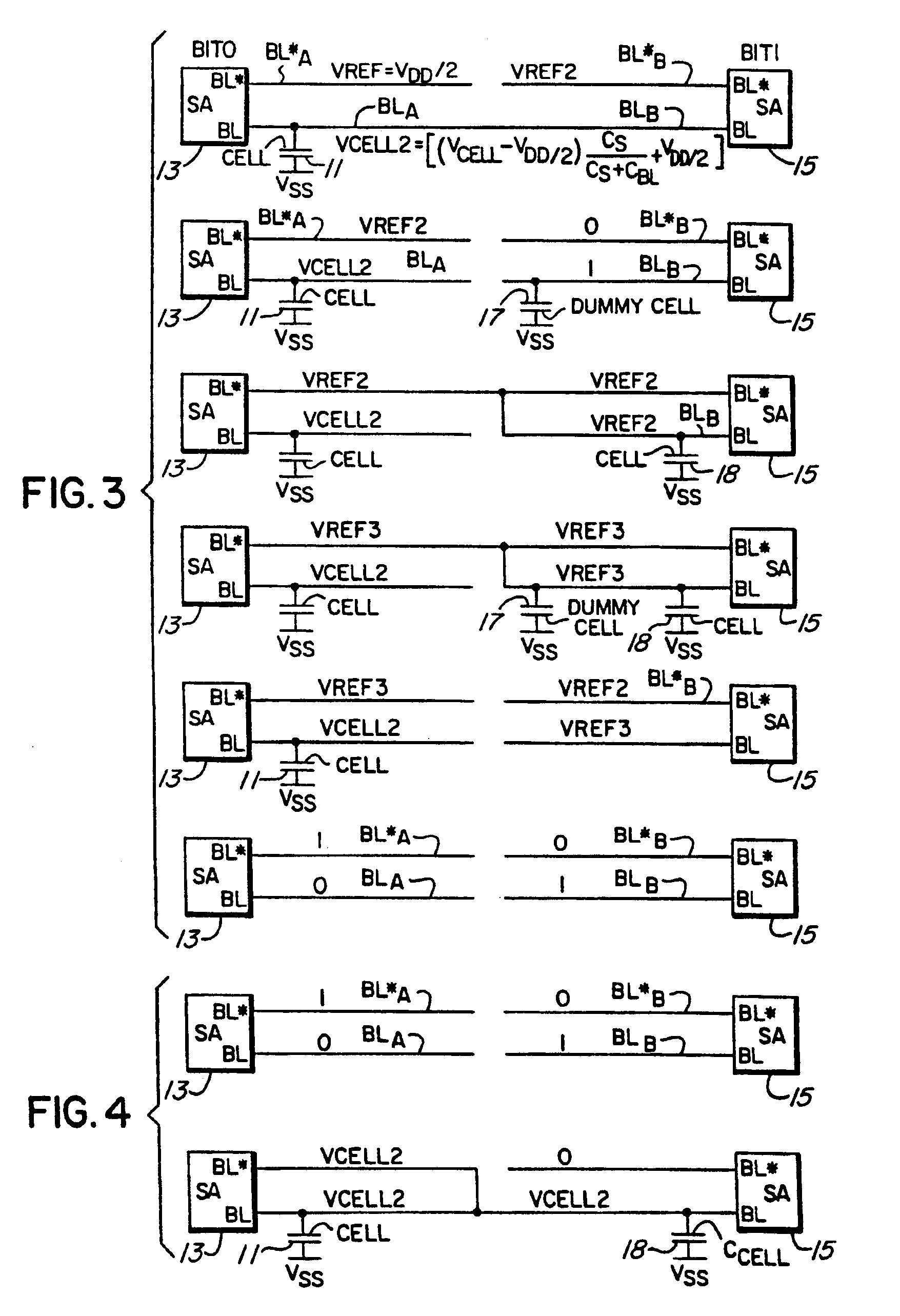Method of multi-level storage in DRAM and apparatus thereof
a multi-level storage and dram technology, applied in differential amplifiers, dc-amplifiers with dc-coupled stages, amplifiers, etc., can solve the problems of low noise margin, method suffers from poor signal margin, and cannot withstand the occasional -particle hit, so as to achieve relatively large noise margin and increase yield
- Summary
- Abstract
- Description
- Claims
- Application Information
AI Technical Summary
Benefits of technology
Problems solved by technology
Method used
Image
Examples
Embodiment Construction
[0021]For a DRAM cell to store two bits using a single cell capacitor, the cell capacitor should store one of four voltage values Vcell0, Vcell1, Vcell2 or Vcell3, wherein Vcell0 represents the lowest and Vcell3 represents the highest cell voltage. To differentiate between the voltages, mid-point voltages Vref1, Vref2 and Vref3 are defined, as shown in FIG. 1. It may be seen that if the lowest actual cell voltage Vcell0 is VSS or zero, Vref1 is one-sixth the highest voltage VDD, Vcell1 is one-third VDD, Vref2 is one-half VDD, Vcell2 is two-thirds VDD, Vref3 is five-sixths VDD and Vcell3 equals VDD. Thus it may be seen that Vref1 is midway between Vcell0 and Vcell1, Vref2 is midway between Vcell0 and Vcell3 and Vref3 is midway between Vcell2 and Vcell3.
[0022]FIG. 2 will be used to illustrate the basic concept of the invention. A sense amplifier 1 can be connected to a pair of conductors 3A and 3B which form a folded bitline. Another sense amplifier 5 can be connected to a pair of con...
PUM
 Login to View More
Login to View More Abstract
Description
Claims
Application Information
 Login to View More
Login to View More - R&D
- Intellectual Property
- Life Sciences
- Materials
- Tech Scout
- Unparalleled Data Quality
- Higher Quality Content
- 60% Fewer Hallucinations
Browse by: Latest US Patents, China's latest patents, Technical Efficacy Thesaurus, Application Domain, Technology Topic, Popular Technical Reports.
© 2025 PatSnap. All rights reserved.Legal|Privacy policy|Modern Slavery Act Transparency Statement|Sitemap|About US| Contact US: help@patsnap.com



